Learn from a NatGeo pro! Olympus visionary Jay Dickman offers 7 tips for great travel photos
posted Friday, May 17, 2019 at 4:52 PM EST
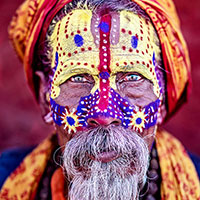
One of the best ways to improve your photography is to learn from others' experience. And perhaps those with the most experience to impart upon the rest of us are the pros who make a living from their works. As a contributor to National Geographic, Sports Illustrated, Life, Time and more, Olympus Visionary Jay Dickman has spent the past four decades gaining reams of experience on all seven continents, and after a recent trip to Asia, he's provided us with a list of seven tips for how to improve your travel photography. The venues for the photos accompanying this article might all be in Asia, but the tips themselves should be applicable just about anywhere you go.
Without any further ado, let's pass things over to Jay!
Asia…the word just sounds magical. I’ve had the good fortune to get to photograph in this vast expanse of culture, wildlife, and geography a number of times in places ranging from the Gobi Desert of Mongolia, the northern borders of Vietnam to Saigon (Ho Chi Minh City), Laos, Myanmar, Thailand, China, India, Japan, the UAE, Nepal, Bhutan, Sri Lanka, and Jordan. The sheer size of Asia is staggering: 48 countries with a total population around 4.5 billion people. It’s huge. If you have the opportunity to spend time across this sweep of land, here a few photographic tips for you.
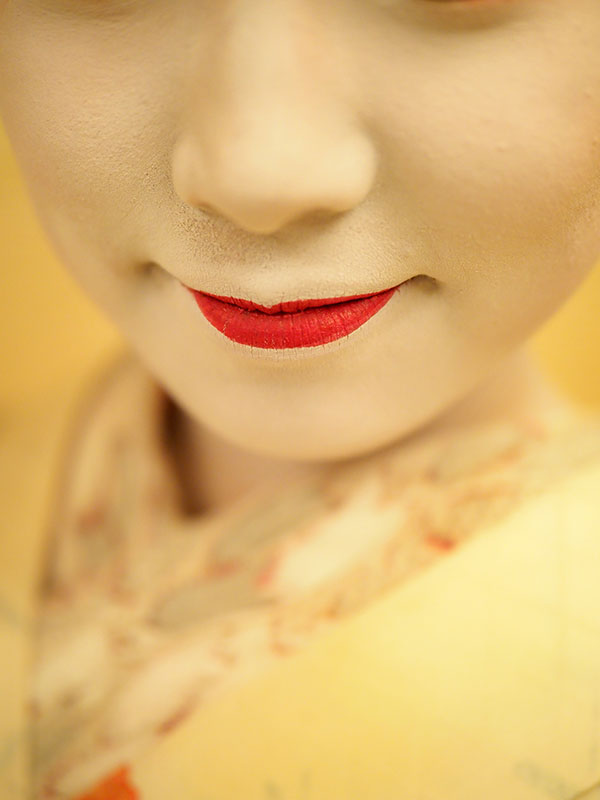
On a photo expedition to Japan for National Geographic, we had the opportunity to photograph geisha in Kyoto. Photography is about problem solving: What is attracting you to your subject? How can you translate your vision to your photograph? The incredible makeup and red lips obviously were the visual attraction here. I shot this with an Olympus 25mm f/1.2 Pro lens, wide open at f/1.2, and at a close range to really emphasize the lips, as the shallow depth of field dropped the focus both in the foreground and background.
Olympus E-M1 MkII / 25mm f/1.2 Pro: 1/400th sec., f/1.2, ISO 1250 with Singh Ray HiLux filter
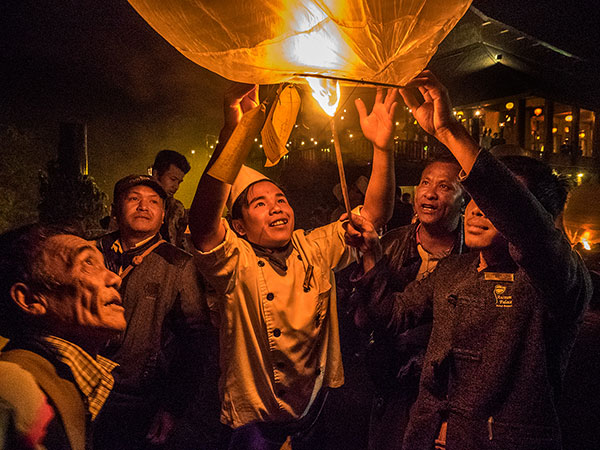
In Myanmar, a group prepares to launch a balloon loaded with slips of paper, on which are written best wishes, prayers and hopes for a new year.
Olympus E-M1 / 12mm f/2: 1/30th sec., f/3.5, ISO 6400
-
Learn something of the culture.
Information is power, and the more you know and understand not only a bit of the history of the area to which you’re traveling, but take time to research something of the culture, the better your photos will be. What may be photographically permissible in your home may not be well received in a different country.
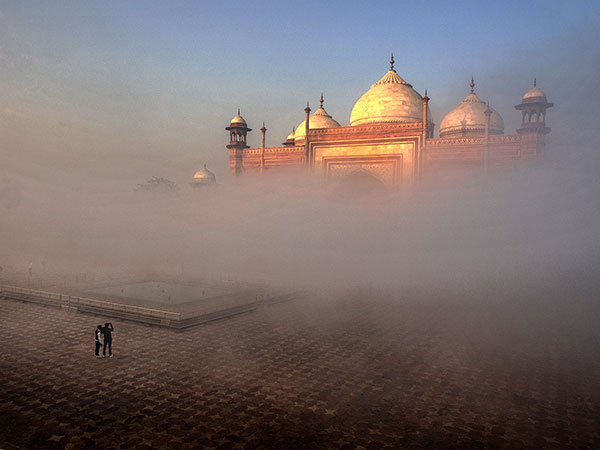
On an Around the World by Private Jet Expedition for National Geographic (someone has to do it) early morning found us at the Taj Mahal. A heavy fog off of the Yamuna River had enveloped the grounds of the building. I walked to an overlook where I have had good photo opps of the Western Mosque, immediately to the west of the Taj Mahal. The fog started to lift, and two visitors walked into the foreground to photograph the site, providing a great bit of scale to this scene. I used a Singh Ray Galen Rowell Neutral Density Graduated filter to capture the extreme dynamic range of the scene.
Olympus E-M1 / 12-40mm f/2.8 Pro: 14mm (28mm equiv.), 1/250th sec., f/7.1, ISO 200 with Singh Ray Galen Rowell Graduated ND filter
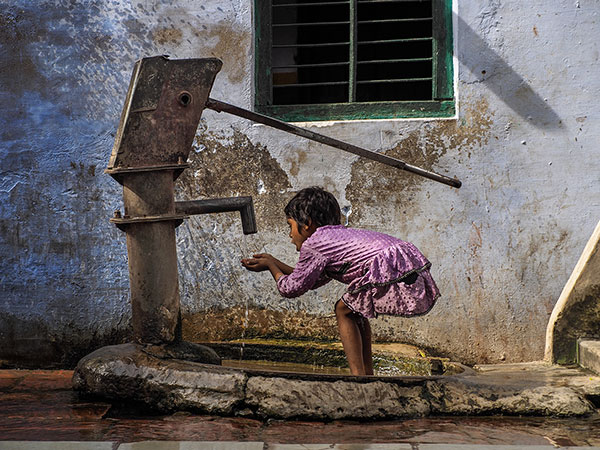
Photography is all about a moment. In the small village of Kachhpura, India, which is nearly in the shadow of the Taj Mahal, a young girl drinks fresh water from a pump installed to provide that precious commodity to the people of Kachhpura.
Olympus E-M1 MkII / 12-40mm f2.8 Pro: 40mm (80mm equiv.), 1/250th sec., f/6.3 with Singh Ray HiLux filter
-
Less is more.
I’m an Olympus photographer, and a couple of things I love about the gear are the small size and less intimidating presence presented by this camera. I almost always work with two cameras: One with a wide zoom, the other with a telephoto zoom. I usually do not work with a camera bag, and I find that by reducing the amount of gear I carry, I am more focused on looking for images, instead of looking for somewhere to set down my heavy bag. I primarily use the Olympus 12-100mm f/4 Pro and the 40-150mm f/2.8 Pro lens. If working in really low light situations, I’ll use the Olympus 17mm, 25mm, and/or 45mm, all of which are f/1.2 lenses.
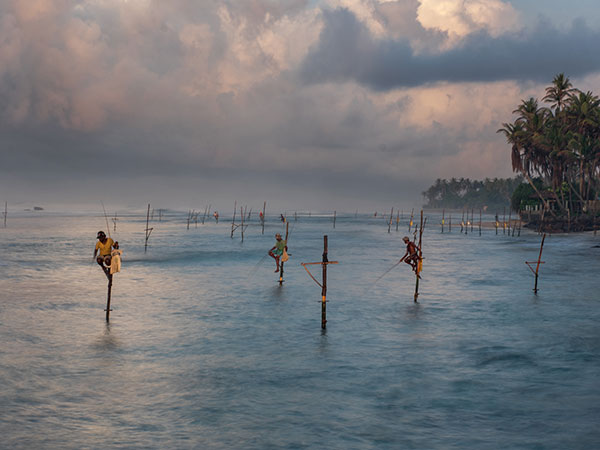
National Geographic provides many photo-based trips on which one can attend. This was a circumnavigation of the island country of Sri Lanka. In the southern port city of Weligama, one can find (and photograph), the traditional stilt fishermen who still use this method to fish in the shallow surf. I used a Singh Ray LB Polarizing filter to help lessen reflection on the water (in addition to reducing the light) as I wanted to shoot a longer exposure, providing a sense of movement in the waves.
Olympus E-M1 / 40-150mm f/2.8 Pro: 40mm (80mm equiv.), 1 sec., f/22 with Singh Ray LB Color Combo Polarizer and Gitzo tripod Acratech ballhead
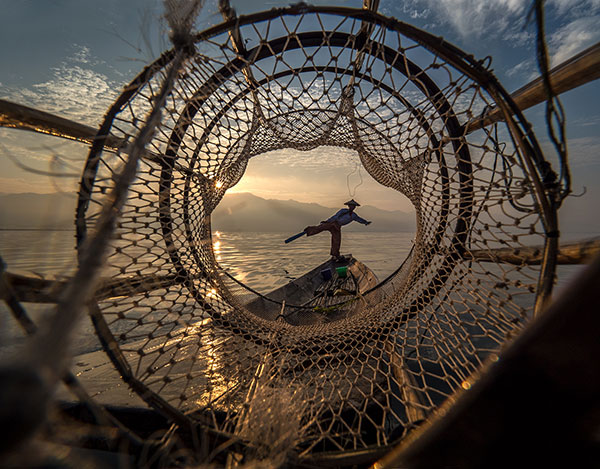
Another National Geographic Expedition: This one found us in Myanmar, an amazing country to photograph. On Inle lake, the net fishermen still use this old method of fishing in the shallow waters of the lake. I waited for that perfect light as the sun was just cresting the mountain in the background. I was also fortunate to have had a great partially-cloudy sky, adding to the feel of the photo.
Olympus E-M1 MkII / 7-14mm f/2.8 Pro: 7mm (14mm equiv.), 1/500th sec., F9, ISO 200
-
Photographing people.
This can be one of the more intimidating processes, especially for the aspiring photographer. Again, this is where less gear can help you, so you are not a massive presence of camera gear. I am always looking for great moments, which often include people. I try not to miss the moment, and after shooting it, I will then decide if I want to approach my potential subject, asking if I can “step into their lives.” This can be intimidating, and the first time you get up the nerve to do it and receive a negative response, it can be crushing. Do NOT take it personally. Perhaps that person has had a negative experience with another photographer, maybe they’ve had a bad day, or there may be a number of other reasons why they may not want to be photographed. Try again with someone else.
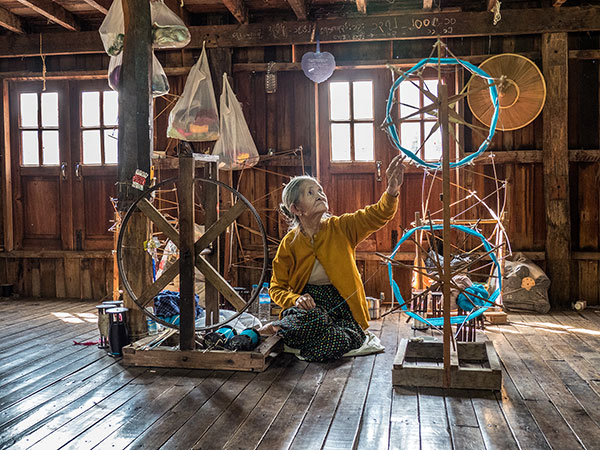
In Myanmar, a woman works her loom as she blends lotus and silk into beautiful fabrics. I love photographing people. It is a process to which, more often than not, one has to devote time. I try to make myself as invisible as possible. First trying to capture a moment when it happens. If an interesting person or a situation I want to work appears, I’ll approach the person, asking if I can visit for a while. Hopefully, I become part of the background or at least a little more boring than usual, so they’ll go back to doing what was interesting. This is when photos can happen. Give this process time, if it feels like there might be some potential. Watch for a moment, be it loud or quiet. That power of the moment can bring a lot of visual interest into your photograph. I love her gesture as she reaches up for her wheel.
Olympus E-M1 MkII / 25mm f1.2 Pro: 1/60th sec., F4, ISO 2000 with Singh Ray HiLux filter
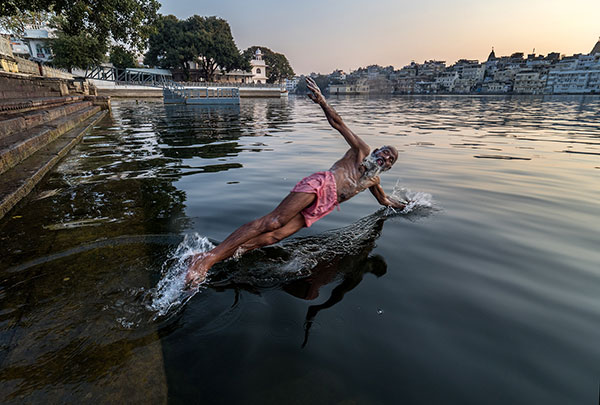
The camera can be your own passport, and your reason to approach someone internationally or domestically. I’ve found the camera gives me a reason to approach folks, asking permission not only to photograph them, but to step into their world. Isn’t this why we travel: To get beyond that veneer of tourism and distance? I was in Udaipur, India on an National Geographic Expedition, and took an early morning visit to the Maji Ka Mandir Temple on Pichola Lake. I knew this was a place where sadhu, or Holy Men, often came to bathe in the waters of Pichola. This sadhu had just finished soaping up when he vaulted into the lake
Olympus E-M1 MkII / 12-100mm f/4 Pro: 9mm (18mm equiv.), 1/200th sec., f/4, ISO 200 with Singh Ray HiLux filter
-
Show real interest in what your potential subject is doing.
This is huge. By exhibiting interest in your subject and what they're doing, you can break down an early barrier wall of potential resistance to being photographed.
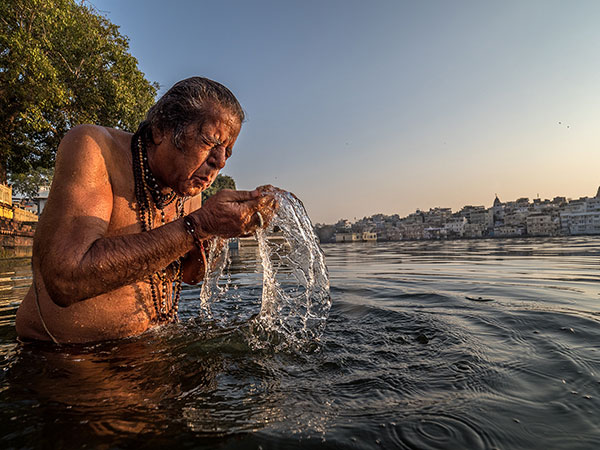
I try to change my point of view if I feel it makes a more interesting and engaging photo. Here at the Maji Ka Mandir Temple on Pichola Lake in Udaipur, India, I got down at water level after asking permission to spend time with this holy man. He was immersing himself in the waters of the lake when he started splashing water on his face. The photographer has to be ready for nice photo opportunities like this, and be ready to get a little wet for the craft!
Olympus E-M1 MkII / 7-14mm f/2.8 Pro: 10mm (20mm equiv.), 1/800th sec., f/5, ISO 200
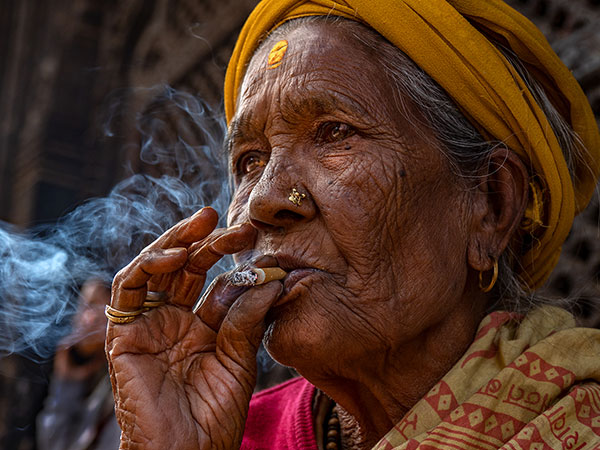
Bhaktapur, Nepal is about 8 miles from Kathmandu. The name means “Place of Devotees”, and is listed as a World Heritage Site by UNESCO for its temples, culture, wood, metal and stone artworks. I was approached by this woman in the typical tourist fashion, her asking if I wanted to photograph her in a clasped hand, welcoming gesture. I asked if I could simply hang around her for a while, when I caught this unguarded moment of her relaxing in between tourists. Give the process of photography time to see what may develop. Sometimes the moment is presented immediately, and other times one does have to watch for that moment.
Olympus E-M1 MkII / 12-100mm f/4 Pro: 34mm (68mm equiv.), 1/125th sec., f/4, ISO 200 with Singh Ray HiLux filter
-
Don't shoot and run.
Here's one of the major mistakes I see many newer photographers make: When you've received permission to shoot, often that subject will stop doing what was interesting to you, stand and turn to you with an implied “go ahead, take may photo” gesture. Don’t become intimidated and shoot and run. Instead, via sign language or if you speak the tongue, ask them to go back to doing what they were doing. Give it a few seconds, they may not want to spend a lot of time staring back. When they go back to doing what was appealing, then the onus falls upon you to really work the situation.
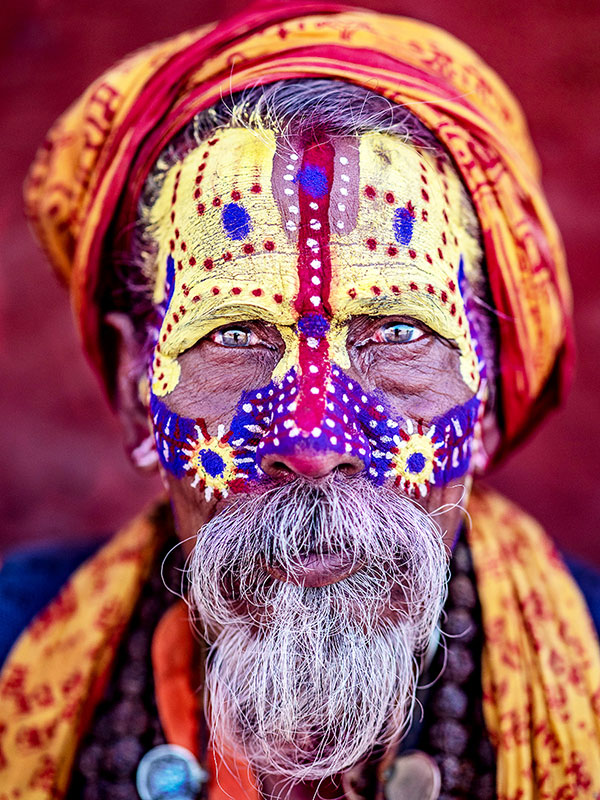
There are various approaches to making portraits of those you meet: a wide shot, in which you bring in background information to provide info as to location and place, or a much tighter image, that really forces an engagement with the subject. In Kathmandu, Nepal one finds the sacred Hindu temple complex of Pashupatinath on the Bagmati River. A World Heritage Site, the temple is the seat of Nepal’s national deity, Lord Pashupatinath. Within the grounds of the site one finds many sadhu, or holy men. I’ve photographed within the grounds of the temple several times and have grown to know several of these richly-garbed individuals. Recently, I photographed this sadhu using an extremely fast lens (meaning that the aperture lets in a lot of light and if shot at close range, it dramatically reduces the depth of the in-focus zone). I’d read a study on what we look for in photographs, where are eyes go first. Unsurprisingly, we first look for eyes and sharpness. Using this fast lens, I filled the frame with this sadhu’s incredible appearance, literally focusing on the eyes
Olympus E-M1 MkII / 45mm f/1.2 Pro: 1/2000th sec., f/1.2 ISO 200 with Singh Ray Hi Lux filter
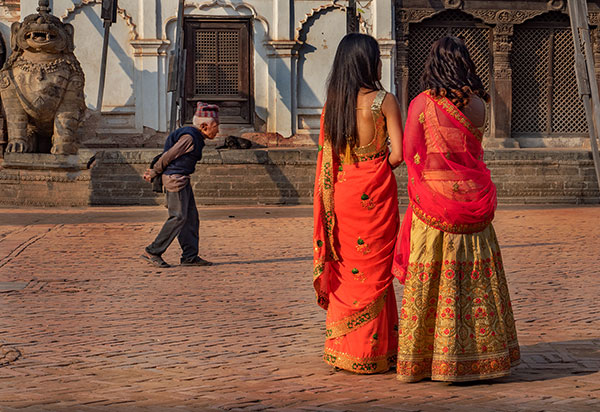
Watching this older gentleman walking through the old streets of Bhaktapur, Nepal with two beautifully-clad women in the foreground, was really appealing to me. Waiting for the nice moment, when his legs were positioned in a pleasing way, and using foreground, middle and background to provide the information of place, all came together for a pleasing image.
Olympus E-M1 MkII / 12-100mm f/4 Pro: 44mm (88mm equiv.), 1/60th sec., f/4, ISO 200 with Singh Ray HiLux filter
-
Be ready for the shot.
Also, when you have that permission, be ready to photograph. Nothing will kill that often-fragile relationship you’ve entered with the subject than fumbling with your gear. Be ready to shoot before you make the approach, that way you’re not wasting their time and they will get the impression that you know what you’re doing.
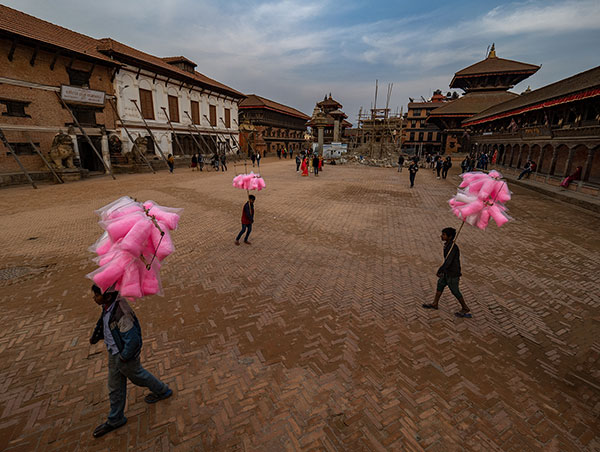
I love the intensity of the pink cotton candy against the background of this nearly empty square in the old city of Bhaktapur, Nepal. At times, the photographer is almost like a choreographer, watching the stage for the movement of the dancers / characters. We have to scan the viewfinder quickly to press the shutter at the ideal moment, when everything comes together. This attention to detail, this process of working the scene, is what I love about photography: Nothing is ever the same twice.
Olympus E-M1 MkII / 7-14mm f/2.8 Pro: 1/320th sec., f/5.5, ISO 200
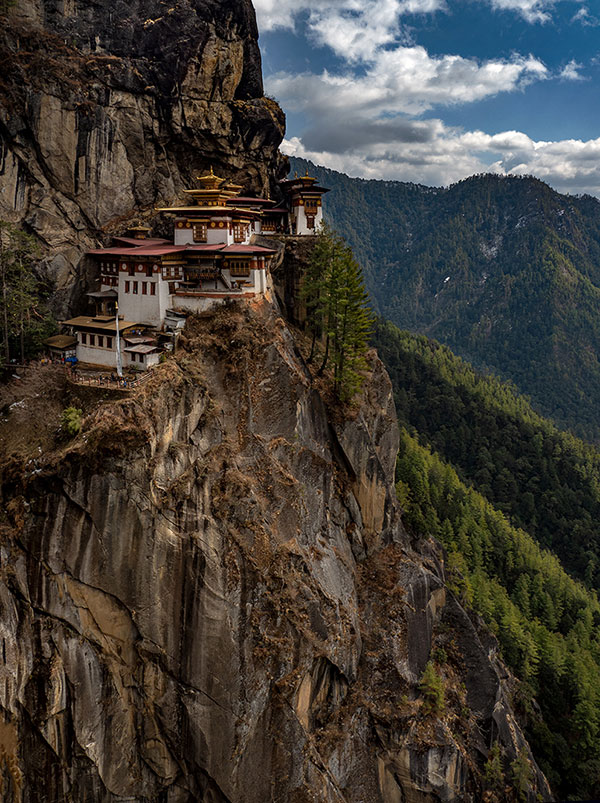
Sense of place is a critical component to consider when developing a narrative from photographs made on a story or trip. Tiger’s Nest is one of Bhutan’s most famous sites. The view of this old monastery is seen after a short hike that I swear had no downhill sections. I used a Singh Ray Graduated ND filter, as the sky was too bright with the shadowed foreground.
Olympus E-M1 MkII / 12-100mm f/4 Pro: 14mm (28mm equiv.), 1/160th sec., f/9, ISO 200 with Singh Ray ND Grad filter
-
Share with your subject.
While shooting, share the images with the subject. This, too, can go a long ways in extending the time you can spend with them. Be sure and get contact info for your subjects, so you can send several of your best photos to them. On many of the National Geographic Around the World Expeditions I do, we’ll repeat places from earlier trips. I carry a bunch of 5x7 prints to give those folks, if I run into them again. This also goes a long way.
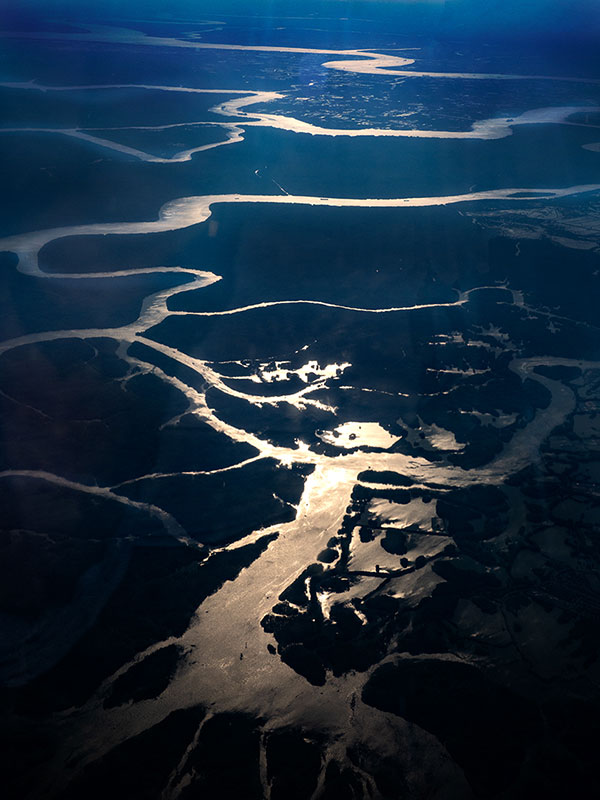
On most flights I look like a first-time flyer, as I’ll often take a window seat to take advantage of this free aerial platform. Landing in Vietnam’s Ho Chi Minh International Airport, we were several minutes out when presented with this beautiful view of the Mekong River delta.
Olympus E-M1 MkII / 12-100mm f/4 Pro: 21mm (42mm equiv.), 1/640th sec., f/8 with Singh Ray HiLux filter
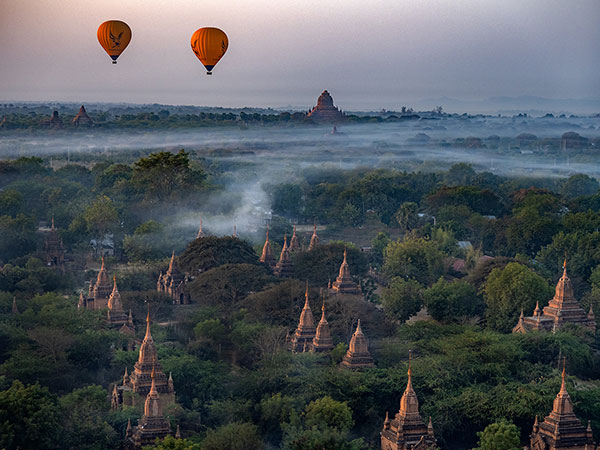
Myanmar is a photographer’s paradise, with the abundance of photographic subjects. On a National Geographic Expedition to the former county of Burma, we were in the Bagan Region. Known for its incredible temples that number in the thousands, an early morning hot-air balloon flight provided this beautiful scene.
Olympus E-M1 MkII / 40-150mm f/2.8 Pro: 40mm (80mm equiv.), 1/640th sec., f/2.8, ISO 320 with Singh Ray HiLux filter
Huge thanks to Jay Dickman for taking the time to share his excellent travel photography tips with us! To see more of Jay's work, visit his website here. Want to learn more about the Olympus Visionary program? You can find a list of visionaries (as well as how to participate) by clicking here.
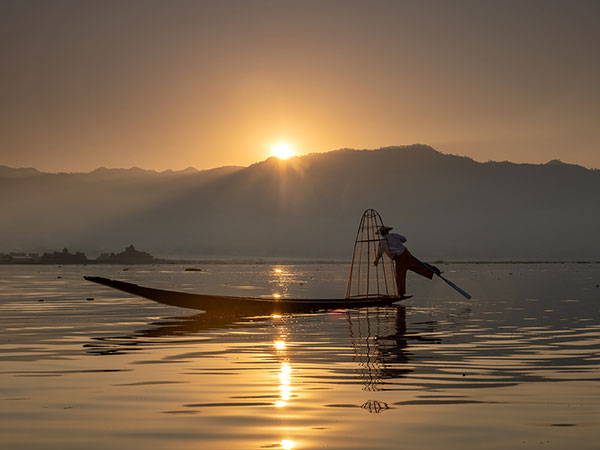
Inle Lake in Myanmar provided the sight of a traditional net fisherman working the waters of this famous and shallow lake.
Olympus E-M1 MkII / 12-100mm f/4 Pro: 24mm (48mm equiv.), 1/800th sec., f/5.6, ISO 200 with Singh Ray HiLux filter
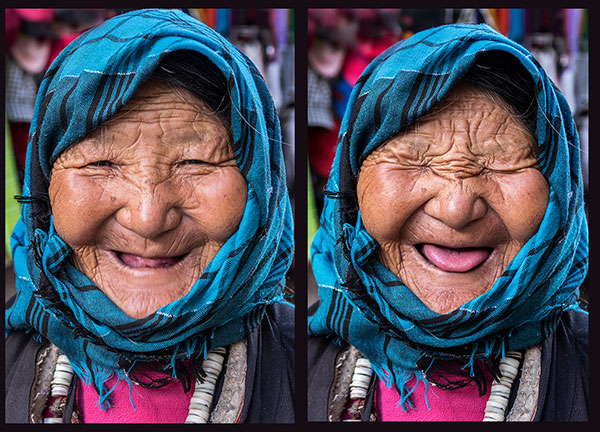
I love photographing people, and I feel that it’s a way we can share, photographically, who we are with each other. In Lhasa, Tibet, I was racing through the crowds of pilgrims in the city who’ve come from distant villages to circumambulate the famous Potala Palace. I saw this wonderful face, raced up to her, and through sign language (my knowledge of the Tibetan language amounts to zero) asked permission to photograph her. One frame was made before she broke up laughing at my presence, only two frames were made of this gentle encounter with this woman.
Olympus E-M1 MkII / 12-100mm f/4 Pro: 31mm (62mm equiv.), 1/20th sec. (thank heavens for incredible in-body image stabilization!), f/4.5 @ ISO 250 with Singh Ray HiLux filter